Eat, pray, love the Communist Party: a road trip through Tibetan lands, guided by China
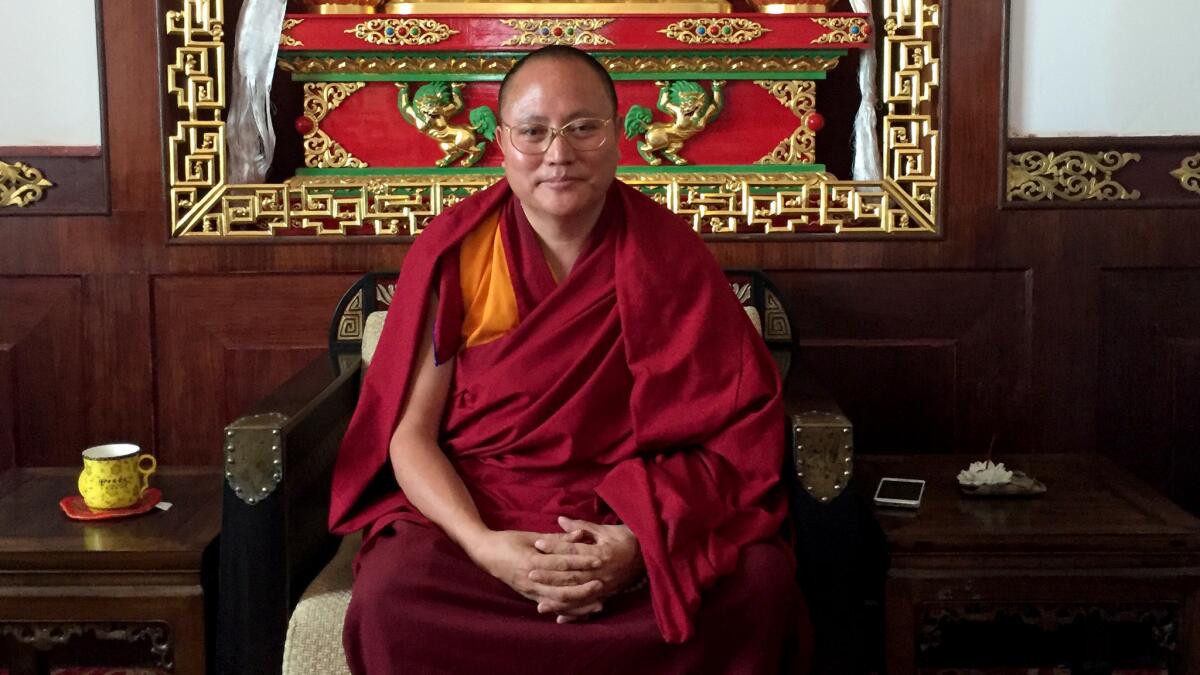
- Share via
It was a road trip through one of China’s most tightly controlled regions.
We drove uphill and deeper into the Aba Tibetan and Qiang Autonomous Prefecture, an area of southwestern China’s Sichuan province, adjacent to Tibet, where more than half the residents are Tibetan.
There were five of us foreign journalists, packed into two minibuses along with camera crews, interpreters and scores of Chinese journalists, all seated shoulder to shoulder with the people in control: party officials from Sichuan and Shanghai. We passed scattered villages, high-altitude grasslands and towering peaks.
Countless propaganda billboards, some many stories high, lined the highway.
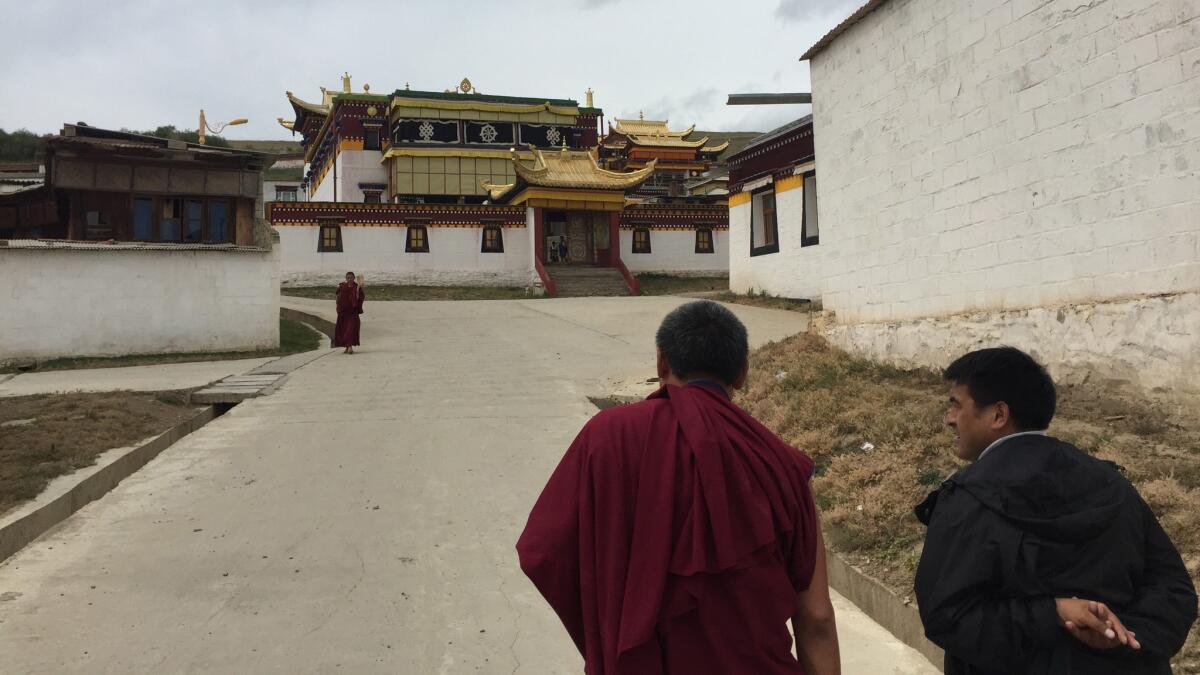
“Religious Belief Must Be in Accordance With Socialism,” said one. “Love the Country, Love the Party, Love Religion,” said another. “Construct an Excellent Political Environment,” said a third.
In 2016, the Chinese government embarked on a Tibet publicity blitz, hosting several delegations of foreign journalists to previously closed areas.
Tibetan advocacy groups often cast China’s sovereignty over Tibet — and surrounding areas like Aba — as a brutal, exploitative occupation by a foreign power. The Communist Party is trying to take back the narrative — to show that China has improved life for Tibetans by giving them roads, electricity, healthcare, education and other portals to modern affluence.
Aba has a long history of unrest, and though it falls outside the highly restricted Tibet Autonomous Region, swaths of the prefecture have also been off limits to foreigners and little is known to the outside world about daily life there.
In 2008, anti-Chinese riots rocked China’s Tibetan regions. Authorities responded with mass detentions, shows of force, and “patriotic reeducation campaigns,” demanding that monks hang portraits of Chinese leaders in their monasteries. Since 2009, more than 140 Tibetans have self-immolated in protest. About a third of them lived in Aba.
We would be on the road for eight days, traveling 1,000 miles through the prefecture and meeting some of its 920,000 people.
Every day stretched out over 12 jam-packed hours or longer; we were forbidden to eat any meals on our own or conduct unchaperoned interviews. But the trip offered a rare chance to report on Aba without risk of government retaliation.
We toured a solar power facility, a Tibetan medicine factory and a yak milk powder processing plant. Each boasted of high productivity figures, but all we saw were long sterile corridors without workers, and pristine metal machines.
We visited a home for Tibetan elders, a school for Tibetan children, and several tourism encampments, where Han Chinese urbanites come to ride horses and sleep in tents, paying top dollar for a taste of nomadic life.
We most looked forward to the interview with a “living Buddha” — our opportunity to ask about the religious repression that Tibetans in China often face.
Living Buddhas are highly respected, government-sanctioned practitioners of Buddhism in China. Officials on the trip repeatedly emphasized that Tibetans are free to worship as they please — and the interview, planned for our fourth day, was their chance to prove it.
A 49-year-old Tibetan monk at the Dazha Monastery blew into the monastery meeting room on a cloud of effortless charm, wearing a burgundy robe and spectacles. He was so affable that even the Chinese Communist Party officials, ill-humored and imperious, seemed to bow a bit in his presence. He gave his name in Chinese as Zhada.
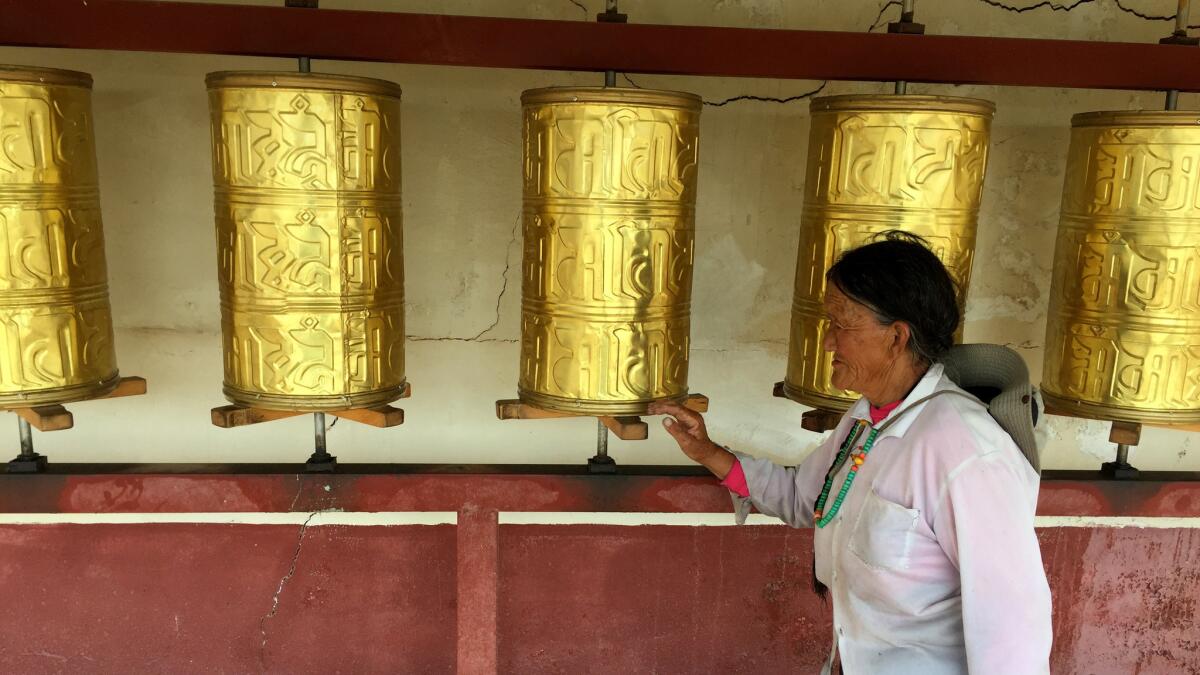
He approached the journalists and officials and shook our hands. “I’m a fan of German soccer,” he told a German reporter and feigned a kick with his right foot. The reporter laughed. Then the monk sat at the front of the room, and we picked up our notebooks.
He began the interview on script. He praised the government for donating books to the monastery library. He said the area’s new highways and cellphone towers have improved monks’ lives by enabling them to share Tibetan culture with the world.
“What do you think of the Dalai Lama?” a Singaporean reporter asked.
The question was extraordinarily charged. Many Tibetans adore the Dalai Lama as their spiritual leader; he fled the Himalayan region in 1959 after a failed uprising, and Chinese authorities, who revile him as a “separatist,” won’t let him return. In China, publicly praising the 81-year-old monk could result in a visit from state security or even a jail term.
The living Buddha took a breath, and the room fell quiet.
His response was peculiar. “The Dalai Lama, the Panchen Lamaand many other Lamas are all living Buddhas,” he said. “We have respect for all of them.”
Was this Zhada’s way, under extreme pressure, of expressing support for the spiritual leader? Had he crossed a line?
The reporters stared quizzically. Other people we had encountered on the trip — both officials and Tibetans — had refused to speak about the Dalai Lama or branded him a separatist in keeping with the party line.
Answers were not forthcoming. Soon afterward, the living Buddha stood, and the officials shuffled us out of the room.
::
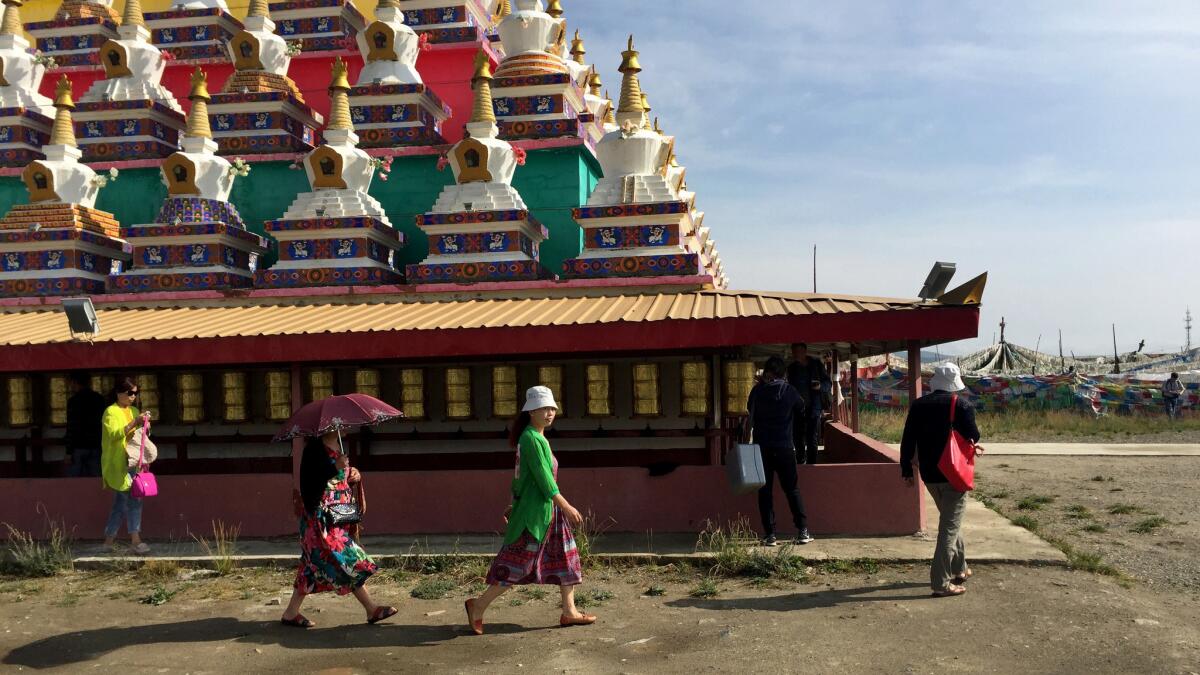
At one village, our tour guide, Yan Danfeng, a Han Chinese government official, led us through immaculate rows of gorgeous stone homes, each three stories high. The interiors smelled like sawdust.
She said the village was home to 202 former nomads who were displaced by a devastating earthquake in 2008. They had bought the homes themselves, she said, and turned them into bed-and-breakfasts.
But out of 45 households, only seven were operational hotels; the rest were under construction. We spotted just two tourists. Villagers were reluctant to give even minor details about their lives, much less describe their feelings on resettlement.
The officials led us into a meeting room, where locals — most of them elderly — sat in a circle to receive us. “Now this is a very brief meeting with normal people,” said Xiao Yonggang, a provincial official. “If you have any questions, you can ask.”
One correspondent asked whether villagers could describe their daily routine.
“Our village is run as a commune,” responded Yan, the tour guide. “Our daily life is just what we’ve been seeing.”
“Can we hear from one of the local villagers?” I asked.
The locals shifted uncomfortably. “Tell them what your days are like,” Yan said. Nobody spoke.
“Just say something,” Xiao said.
After about a minute, the officials identified a young, Mandarin-speaking villager, and he walked to the front of the room.
“Our life is, we get up every day, then we eat,” said the 32-year-old man, who gave his name in Chinese as Baimamu. “Then we go out and work, we farm. Then we eat, and in the afternoons, if it’s summer, we work again. Then we eat dinner.
“That’s what our day is like,” he said. “That’s all.”
Both the officials and local Tibetans appeared anxious that any deviation from the party line would destroy their facade of normality, revealing the discord and uncertainty roiling beneath.
When asked why authorities generally prohibit foreign reporters from visiting the Tibet Autonomous Region, one trip organizer, Chen Weide — a Sichuan provincial media official — said that it was because “the altitude is very high” and that authorities fear for visitors’ safety. (The area remains open to foreign tourists.)
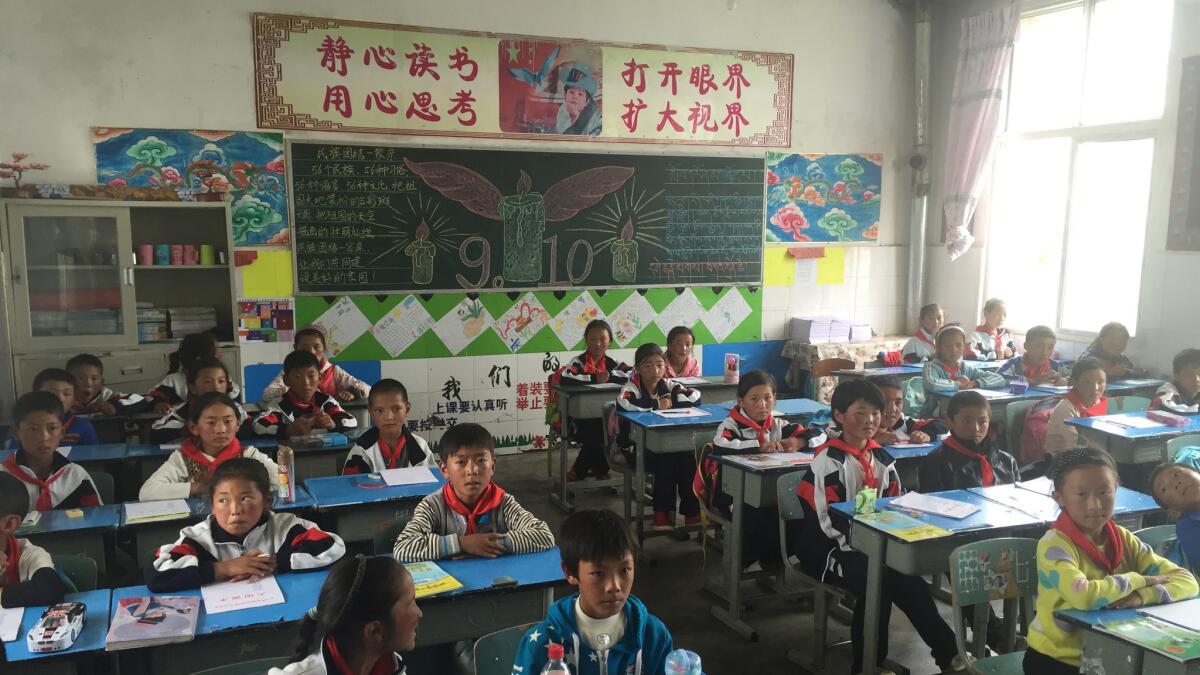
We were closely monitored. Each time we stopped at an attraction, two to five SUVs full of middle-aged men — brooding smokers, most wearing ill-fitting polo shirts — would park behind us. The men followed along as we reported. They did not introduce themselves, and they did not respond to questions.
Everything was recorded. The foreign journalists recorded the tour guides, and Chinese reporters recorded the foreign ones. The shadowy men recorded us all.
Late one night, another journalist and I sneaked out of the hotel and wound through the darkened side streets of Hongyuan County, a cluster of slapdash mid-rises on the edge of the grasslands. We stepped into a small shop, where a Tibetan family sold silver jewelry and Buddha statuettes.
The shopkeeper, a young man, agreed to answer some questions. But as soon as we shifted the conversation to religion, he seized up, and his eyes darted anxiously. “We have a bit” of religious freedom, he said. He stuttered briefly and acknowledged that, yes, he revered the Dalai Lama.
“It’s our belief,” he said. He clasped his hands. We left after about two minutes, ashamed of even asking.
Outside, I scanned the empty streets, vigilant for tailing cars and footsteps, and lurking threats that may or may not have been there.
::
Nearing the end of our tour, we drove down from the highlands and spent the weekend hopping among scenic spots and small cities. The officials seemed to relax slightly, and Chinese media began running stories about the trip.
“A group of foreign reporters, who just concluded a weeklong tour of a Tibetan-inhabited area in southwest China, have said they were amazed by the experience,” reported the official New China News Agency. Other reports quoted foreign journalists praising the area’s development and natural beauty.
The reports included no acknowledgment of restrictions, no skepticism about the authenticity of the villagers presented for interviews, and nothing at all about the “living Buddha” — no quotes, no name, no description. Even mentioning our discussion about religion, it appeared, was off-limits. It was as if the monk did not exist.
ALSO
He was proud to be the father of an enormous family — until he couldn't feed them
Iran's newest fighters are sidewalk vendors, 'ready to struggle to our last drop of blood'
American man arrested in shooting of U.S. official in Mexico
Sign up for Essential California
The most important California stories and recommendations in your inbox every morning.
You may occasionally receive promotional content from the Los Angeles Times.







